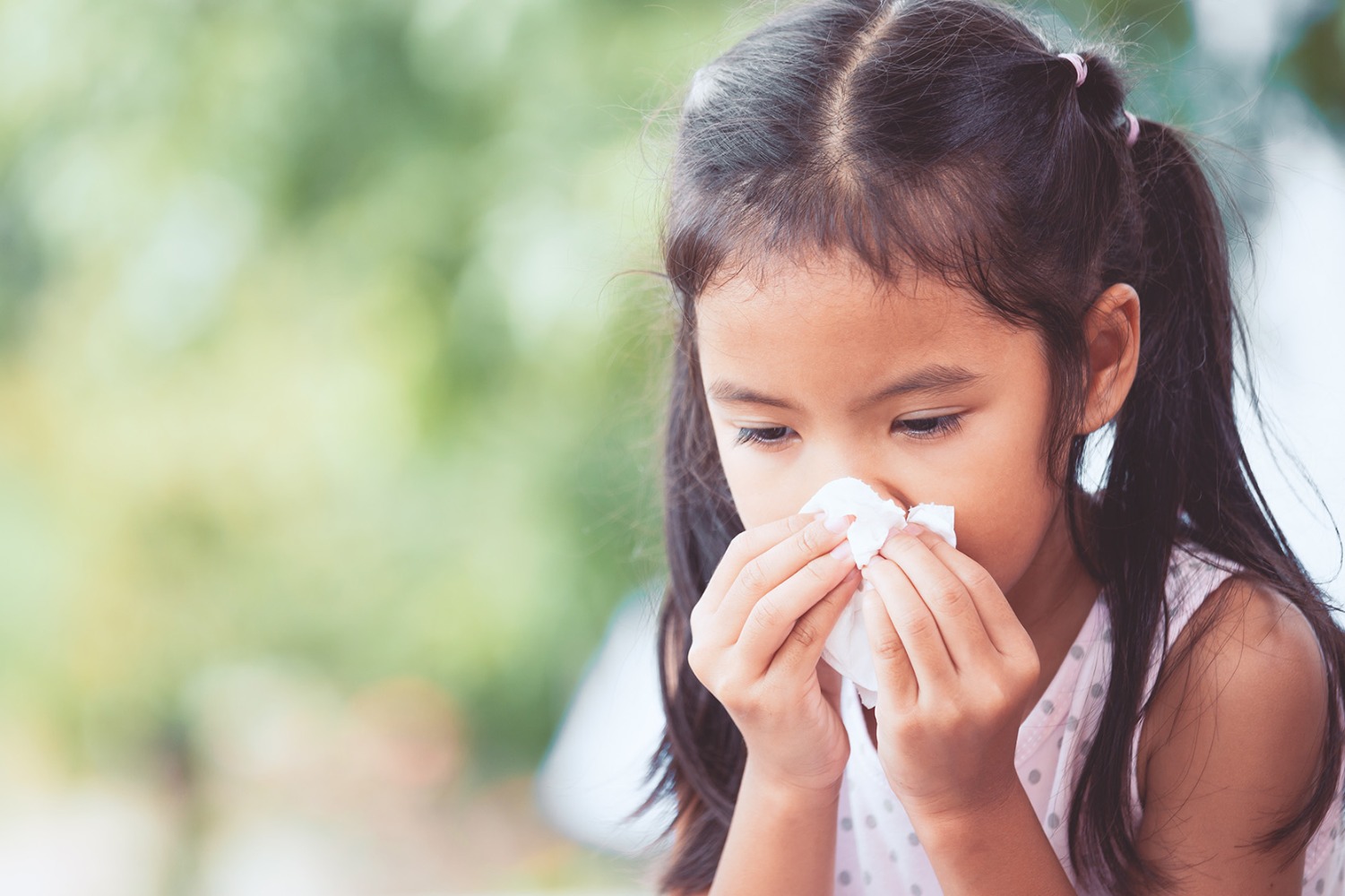
With the onset of fall and the first quarter of the school year, this is a time of year when children are more exposed to common fall allergens, such as ragweed, and also to contagious viruses. Allergies and colds display common symptoms so how can you distinguish between the two?
What Are Allergies?
Allergies are a common immune system response to certain substances, known as allergens, that are harmless to most people. When a child with allergies comes into contact with these allergens, their immune system overreacts, releasing chemicals like histamines that cause allergy symptoms. Unlike a cold, allergies do not typically come with a fever, aches, chills, or fatigue. Instead, you may notice symptoms such as sneezing, itchy or watery eyes, runny nose, nasal congestion, sore throat, or a persistent cough. Allergies can also trigger asthma symptoms, such as shortness of breath or wheezing. Pay attention to the timing of symptoms – if they occur consistently in certain seasons or after exposure to specific irritants, allergies may be the culprit. An estimated 25% of children in the United States have allergies, and this number has been steadily increasing over the past few decades.
Symptoms to Look for in Allergies
With allergies, you may notice symptoms such as:
- excessive mucus production
- consistently stuffy or runny nose
- frequent episodes of mouth breathing
- sneezing
- watery eyes
- sore throat
Symptoms of allergies can vary depending on the type of allergen involved – for example, food allergies may cause hives or stomach upset while seasonal allergies may cause itchy eyes and congestion.
What Is a Cold?
A cold is a viral infection that affects the respiratory system, specifically the nose and throat. It is often accompanied by symptoms such as a stuffy or runny nose, nasal drainage, sneezing, sore throat, and coughing. Your child may also experience fatigue, headache, or a mild fever. Colds are usually spread through droplets from coughs or sneezes, or by touching contaminated surfaces. Unlike allergies, cold symptoms usually last for about a week to 10 days and gradually improve. If your child is experiencing these symptoms, it is likely that they have caught a cold rather than having allergies.
Symptoms to Look for in a Cold
If your child has a cold, you may notice symptoms such as:
- fever
- fatigue
- chills
- stuffy or runny nose
- sneezing
- sore throat
Allergy vs. Cold: How to Tell the Difference
When trying to determine if your child has allergies or a cold, look for specific clues, such as mucus production, itching, and fever. Pay attention to the duration of the symptoms – allergies tend to persist longer than a week, whereas cold symptoms usually improve within that timeframe. The timing of the symptoms can be helpful – if your child's symptoms consistently occur during certain seasons or after exposure to specific triggers, allergies are more likely to be the cause.
Treatment Options for Allergies and Colds
When it comes to treating allergies and colds in your child, there are several options you can consider. For allergies, you may want to try over-the-counter antihistamines or nasal sprays to alleviate symptoms like sneezing and a runny nose. It's also important to identify and avoid triggers, such as certain foods or environmental allergens. When it comes to colds, rest and fluids are the answer. You can also use over-the-counter medications to relieve symptoms like congestion and sore throat. However, always consult with your child's pediatrician before giving them any medication, especially if they are younger than 2 years old. Remember, each child is unique, so what works for one may not work for another. Be sure to consult with your child's healthcare provider for personalized treatment options.
Preventative Measures for Allergies and Colds
To prevent allergies, it's important to identify and avoid triggers such as certain foods or environmental allergens. Keeping your home clean and free of dust and pet dander can also help reduce allergen exposure. You might think about using a HEPA filter in your HVAC system or placing a personal air filter in your child's room. If your child's allergies are triggered by environmental causes, save the outdoor activities until the evening, as organic materials pollinate during morning hours.
When it comes to preventing colds, encourage regular handwashing and teach your child to cover their mouth and nose when coughing or sneezing. Boosting their immune system through a healthy diet, regular exercise, and adequate sleep can also help ward off colds.
When to Seek Medical Help for Your Child's Symptoms
If your child's symptoms persist or worsen despite at-home treatments, it may be time to seek medical help. Additionally, if your child has difficulty breathing, develops a high fever, or experiences severe pain, it is important to consult a healthcare professional. Trust your instincts as a parent and seek medical attention if you have any concerns about your child's health. Hendersonville Pediatrics is here to provide guidance, reassurance, and personalized care for your child's specific needs.
Managing Allergy and Cold Symptoms
Allergies can be treated with antihistamines, decongestants, and nasal spray. Avoiding the allergen is also important. Colds can be treated with over-the-county medications like decongestants, pain relievers and cough suppressant. Be sure your child stays hydrated and gets plenty of rest to support their immune system. Lastly, consult with a healthcare professional for appropriate medication options and treatment plans to provide your child with relief.
For more information about allergies click here, for colds click here, and the differences between the two, click here.


